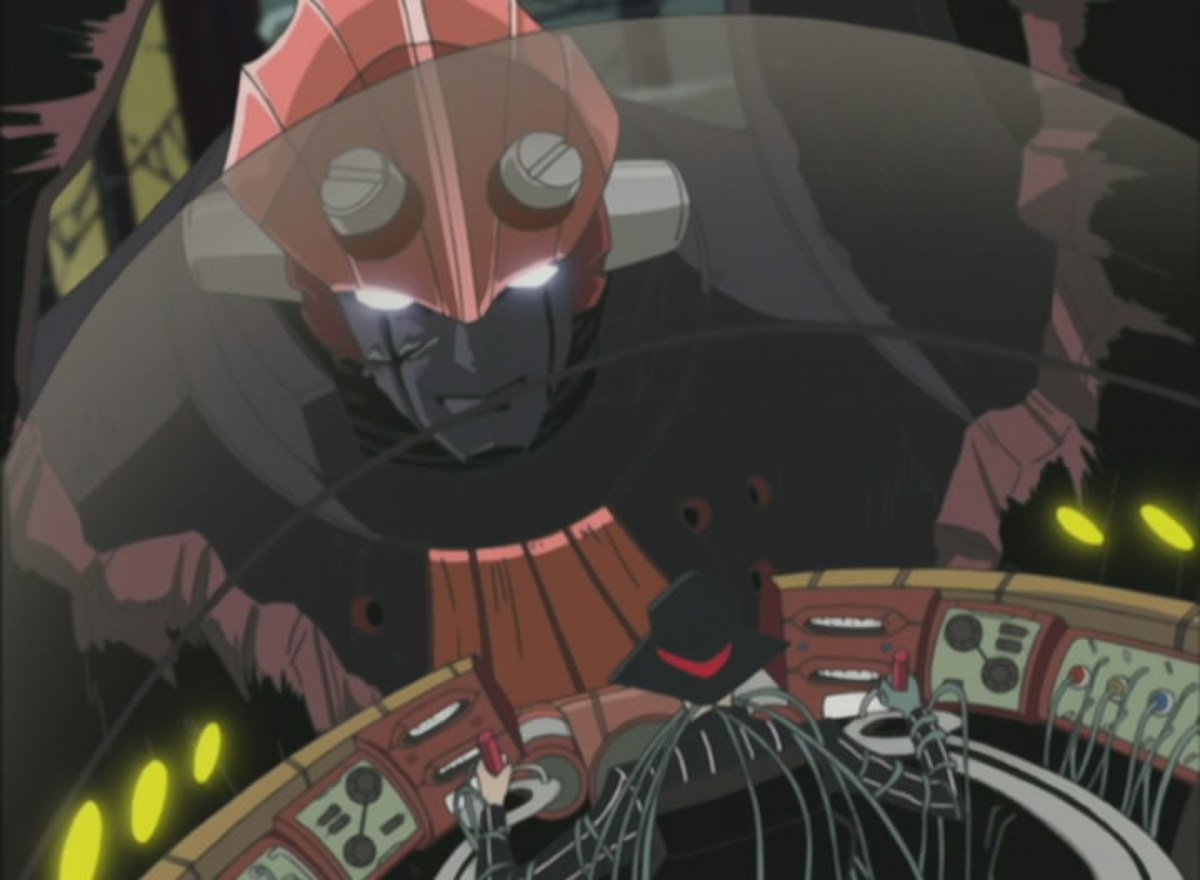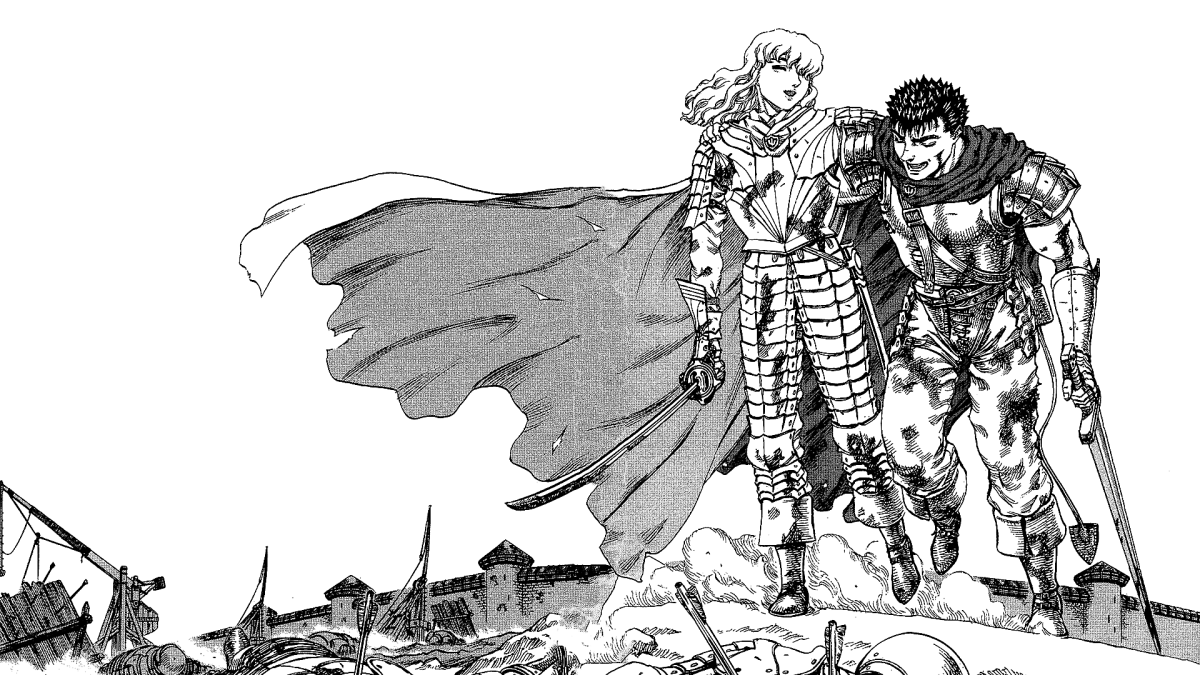Anime Reviews: The Big O




The Big O's stylish aesthetic and mysterious setting are as cool as cool can be, although its ambitious narrative often leaves viewers wandering in the dark.
Title: The Big O
Genre: Action
Production: Sunrise
Series Length: 26 episodes
Air Dates: 10/13/1999 to 1/19/2000, and 1/2/2003 to 3/23/2003
Age Rating: 7+ (mild violence, mild language)
Summary: Paradigm City, "the city of amnesia," is a run-down metropolis struggling to recover from a catastrophic incident 40 years ago that caused every person alive to lose all memory of everything before The Event. Roger Smith is a man who performs a much-needed job within the city of amnesia--he is a Negotiator who carries out dangerous business transactions, and when negotiations become too intense, Roger is able to summon the Big O, a giant robot known as a "megadeus" that is capable of dealing with any threat. On one particular day, he accepts a job from wealthy scientist Miguel Soldano to deliver a ransom to the thugs who have kidnapped his daughter, R. Dorothy Wayneright. After successfully rescuing her, Roger discovers that Dorothy is, in fact, an android. Not long after, he receives a visitor in his illustrious mansion requesting his assistance for a bodyguard job, but this new client is a familiar face: R. Dorothy Wayneright.
The Good: Slick and stylish; iconic setting; memorable characters and premise
The Bad: Schizophrenic plot and obtuse dialogue; repetitious Monster-of-the-Week episodes; abrupt ending leaves lots of unanswered questions
The Ugly: Thinking about how overworked construction workers in Paradigm City must be
Back when I was a young man, we had this thing called Toonami on Cartoon Network. Well, it's back now, but it was gone for a while, and it's where folks like me really discovered the wide world of anime. And one of the more interesting series to make its appearance on the block was The Big O, which was a very odd cross between a film noir and a mecha anime. But hey, it was cool, we all liked it, but the series' original run was only 13 episodes and its ending was confusing as balls. But hey, it was cool, and we all liked it. Several years later, Cartoon Network ponied up the cash for Sunrise to make another 13 episodes, and so the show could finally be finished. And its ending was confusing as balls. But hey. It was cool. And we all liked it. But was it worth liking? Let's find out, I guess.
First of all, while the technical aspect of it is not so impressive by today's standards, the art style and designs of The Big O are just dripping with cool. Taking heavy influence from American action cartoons of the 90s (Batman: The Animated Series in particular), there is an overarching gothic style that makes this series unique in the world of anime, and the angular, bold character models give the show a timeless feel. There's a lot of sleekness and grace to the artwork, and even more so in the show's second season, where Cartoon Network's funding allowed for the art to be even slicker and the action scenes even more grandiose. The soundtrack also includes a lot of bombastic orchestral tracks, jazzy sax solos, bluesy pianos, and pulpy 60s spy-movie synths, so even your ears can revel in the metric tons of coolness exuded by The Big O.
Another major boon for the series is that its setting, Paradigm City, with its towering yellow domes, dingy alleyways, gothic mansions, and foreboding tunnels, is instantly memorable and will stay with you long after you've finished watching. Roger's mansion is as classy and high-brow as you can imagine, but right next door, there are ruins and dilapidated structures likely inhabited by squatters, and it's all overshadowed by the luxuriously decadent palace of Alex Rosewater, the president of Paradigm Corporation, which runs the city. And there are smaller subsections of the city where there are dams and artificial grasslands and forests--there are so many places to see in Paradigm City, and I couldn't help but crave seeing each new sight. Great stuff.
It also helps that our central cast is filled with instantly-likable and even-more-instantly-memorable characters. I mean, to put it into perspective, I hadn't seen this series in over a decade until this month, and I still remembered these people and what they were all about. How could I forget about the always-cool Roger, or the dryly sarcastic Dorothy, or the overly-enthusiastic-about-his-butler-position Norman? Or even goofball thief Beck and femme fatale Angel? I loved them all a decade ago, and I love them all today. Their traits and interactions are so much fun that you can't help but remember them. And hey, speaking of remembering, the series' premise of a mysterious incident that wiped out everyone's memories is positively irresistible. I had to know what The Event was! More on that later, but now we've reached the end of the series' high points and must now delve into where it went wrong.
Now, I'm sure this sprang to mind immediately for those of you who've never seen the show, but even if you have, trying to mix a mecha anime with a film noir is just going to feel off no matter what you do. It's like putting ice cream on pizza--it's just weird. It also doesn't help that a lot of the dialogue is just poorly thought-out and confusing. Half the time, when two characters are talking about a major plot thing that just happened, they'll speak in really vague terms with lines that sound like they're having two entirely different conversations with invisible partners. And then just try to comprehend the madness going on in episodes like "R.D" and "Hydra," and you'll be driven insane before the day ends.
Another of the series' main flaws is that the first season is loaded, positively loaded with go-nowhere monster-of-the-week episodes that serve no purpose other than to fall into a formula and tease us with the prospect of new information about the setting. Which almost never happens. The formula goes like this: Roger's doing a thing, some dialogue is set up, Roger gets a job offer, Roger takes the job, it's bigger than it seemed, a double-crossing happens, a giant monster appears, Roger summons the Big O to fight the monster, the job is solved, the set-up dialogue is paid off, end credits. Blaaaahhhhhh. This especially infurates me because...
The biggest flaw of The Big O is that its final episode and ending are pants-on-head lunacy. Because of all those early filler episodes, we now have to cram four episodes' worth of world-shattering revelations into a single climax, and the result is nonstop confusion and broken promises. And we STILL don't have a satisfactory explanation for what The Event 40 years ago truly was! Or what the big reveals are even all about! Or why! Who did all of this? We get a brief glimpse of them, but why did they do it? How did they do it?! ANSWER MY QUESTIONS, DAMMIT!
Frustration and confusion aside, we've come back to the million dollar question: Is The Big O worth seeing? Honestly, I can't wholeheartedly give this one a recommendation. The good outweighs the bad, sure, but both seasons' endings will leave a bad taste in your mouth, and as Arkada always says, "the ending is paramount." And as cool and stylish as the show may be, that's only really worth a recommendation if you're an artist and can really appreciate that kind of thing for long periods of time and at more than face value. I guess the cool characters and mysterious premise will delight a lot of you, so if I were to recommend this series to anyone, it would be those of you who read the summary above and can't help themselves from finding out what the answers are. And I'll just warn those guys ahead of time that your mileage may vary.
Final Score: 6 out of 10. A tragic display of style over substance for the most part, The Big O's slick presentation, cool characters, and irresistible mysteries are priceless oases in a desert full of off-kilter dialogue, half-baked plot twists, and tedious filler episodes.





